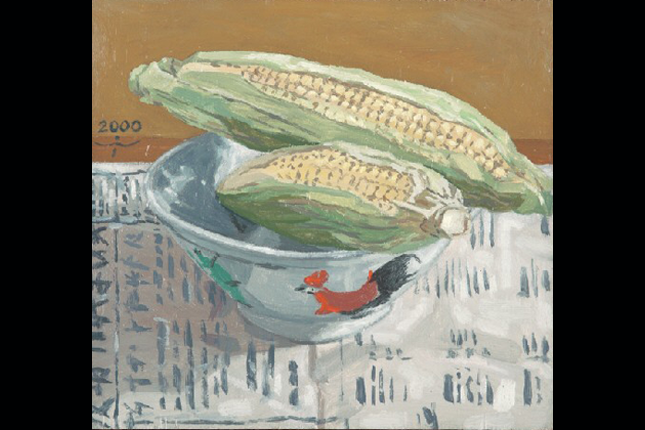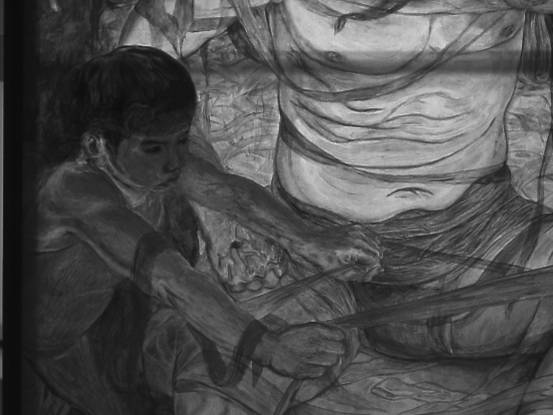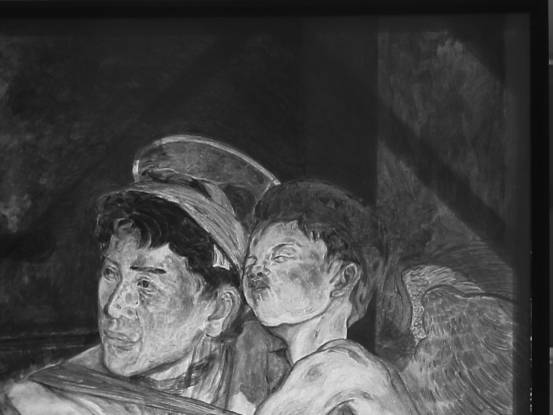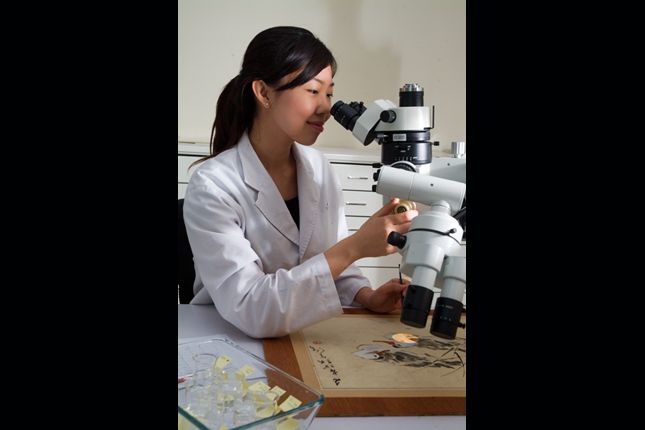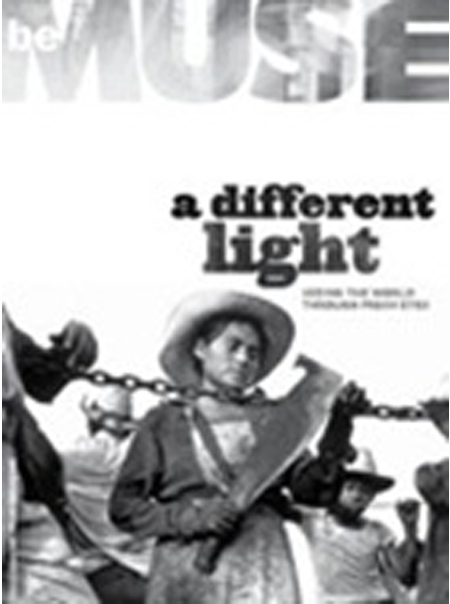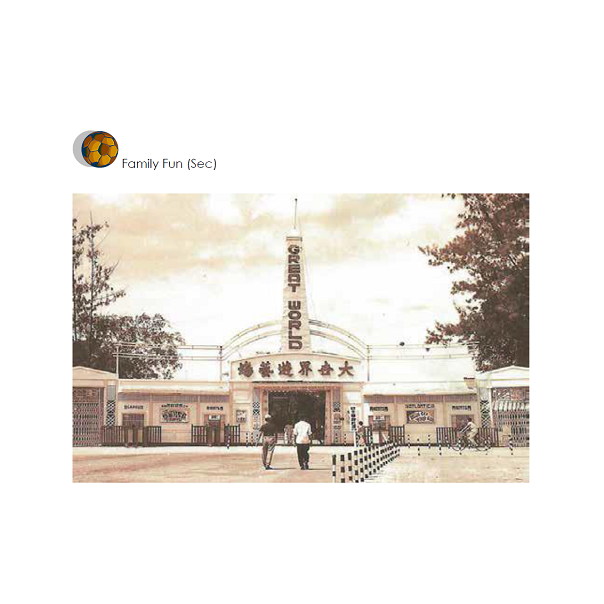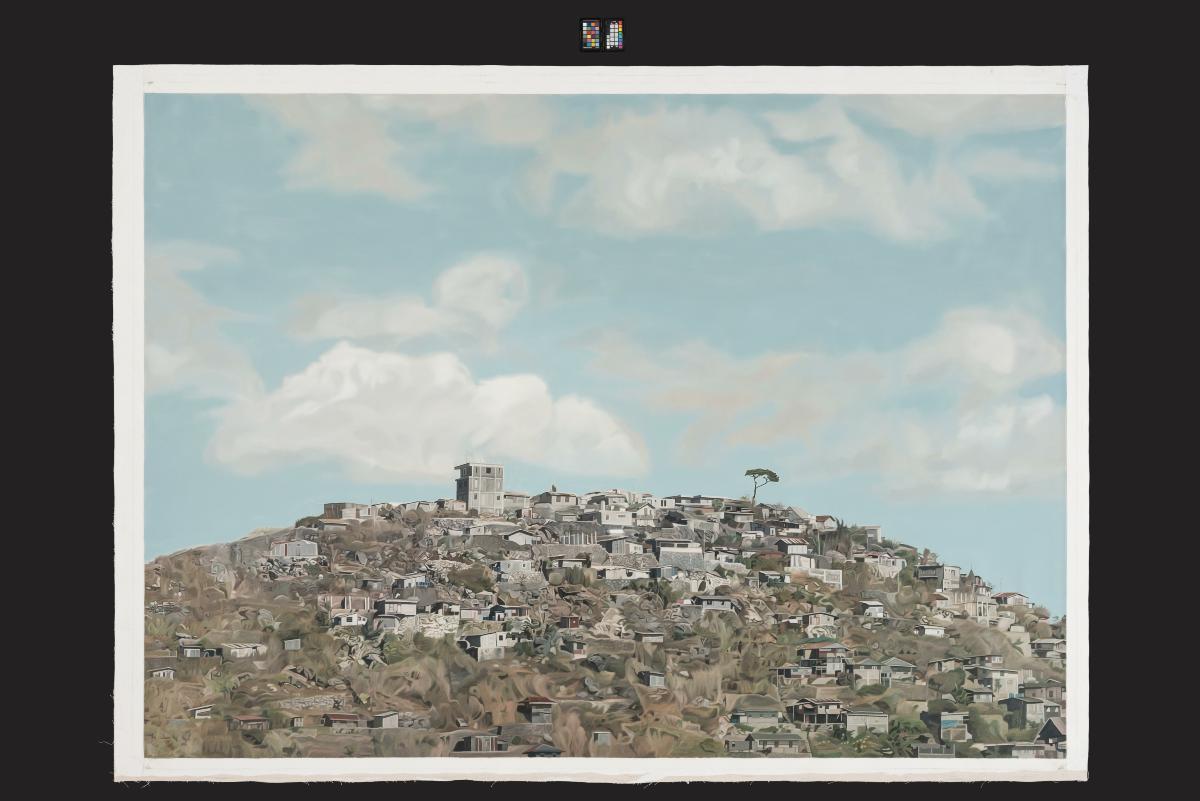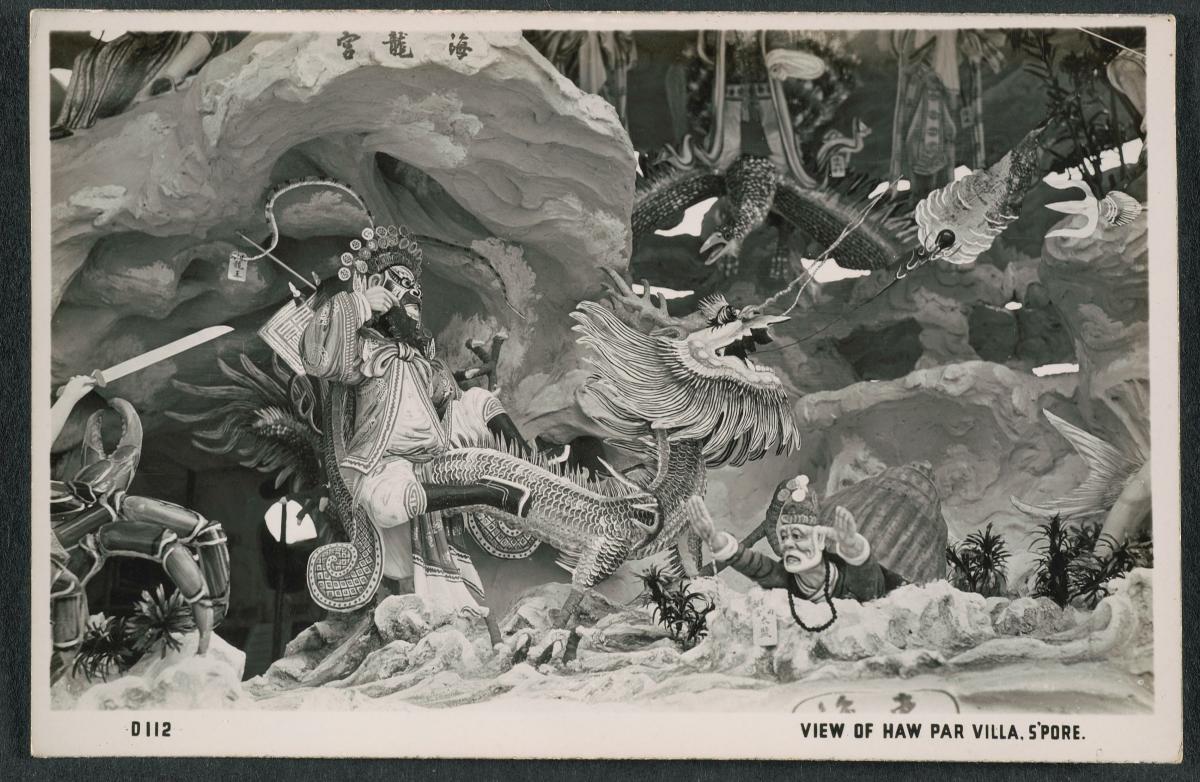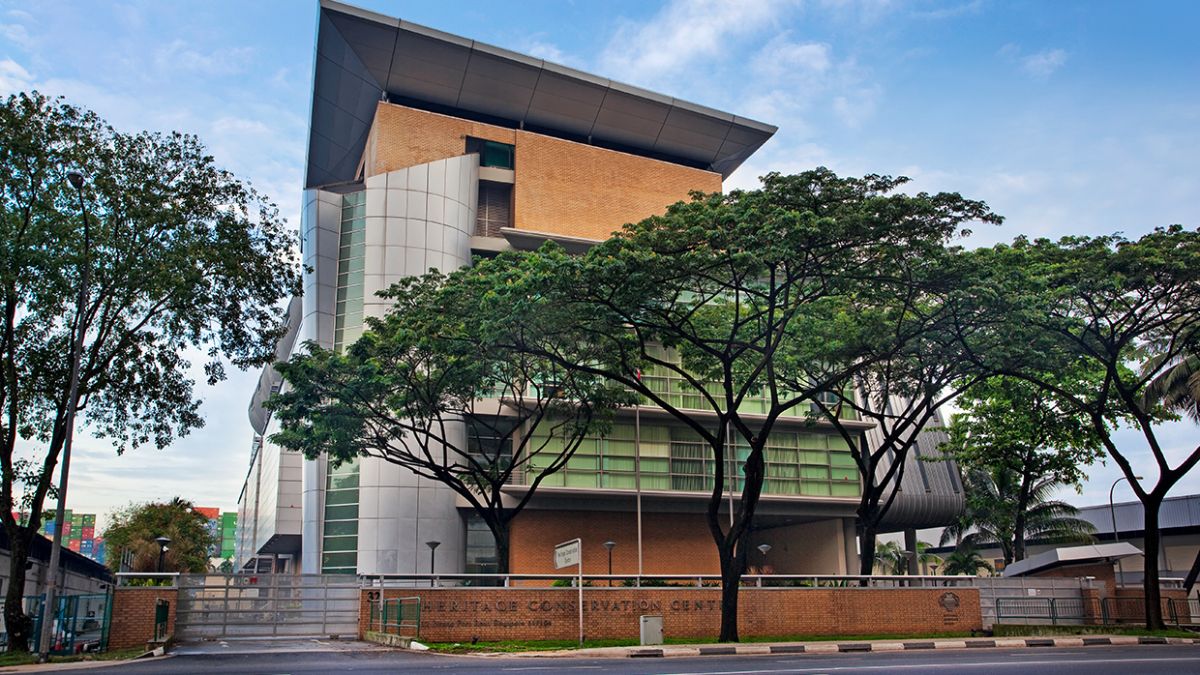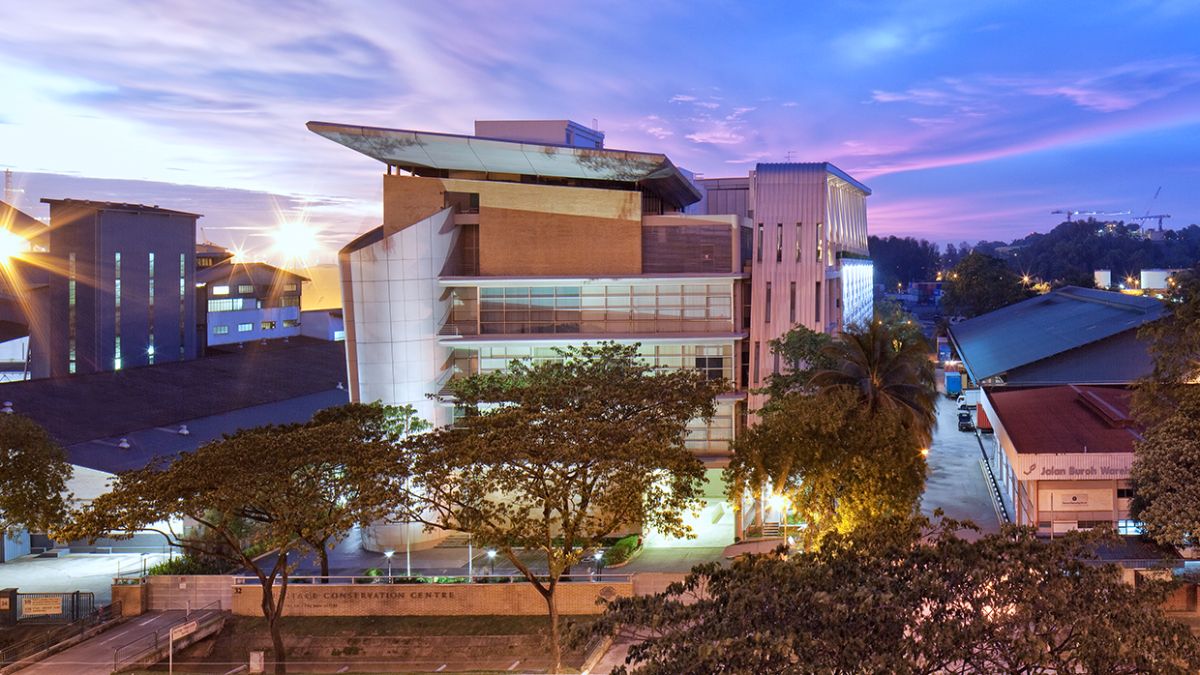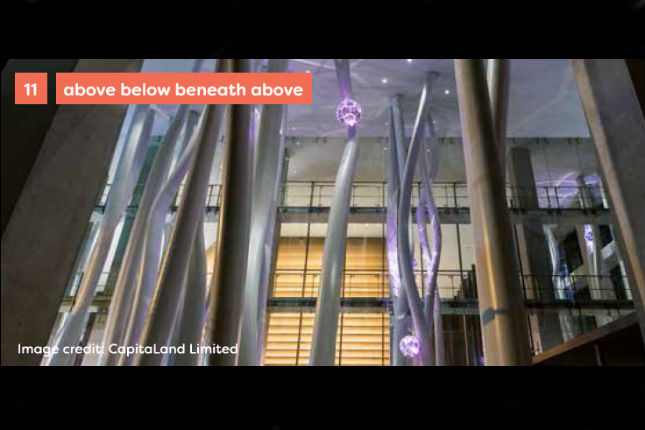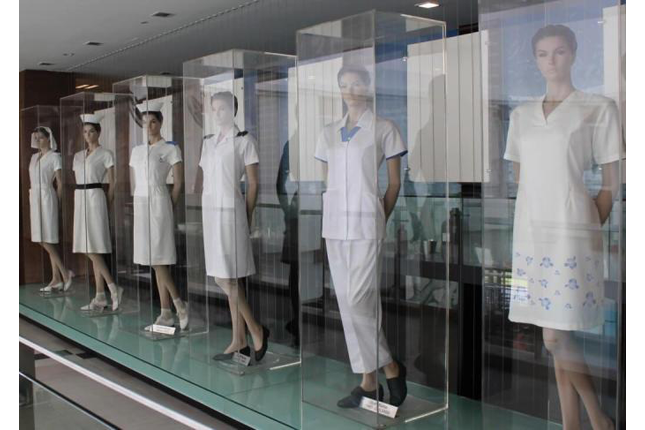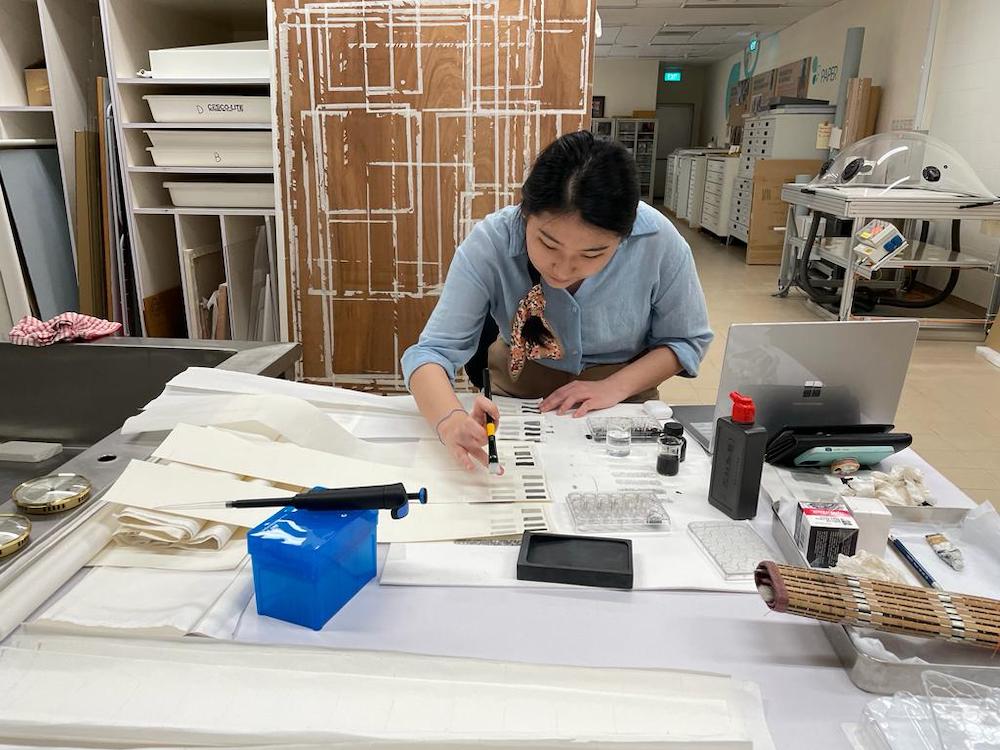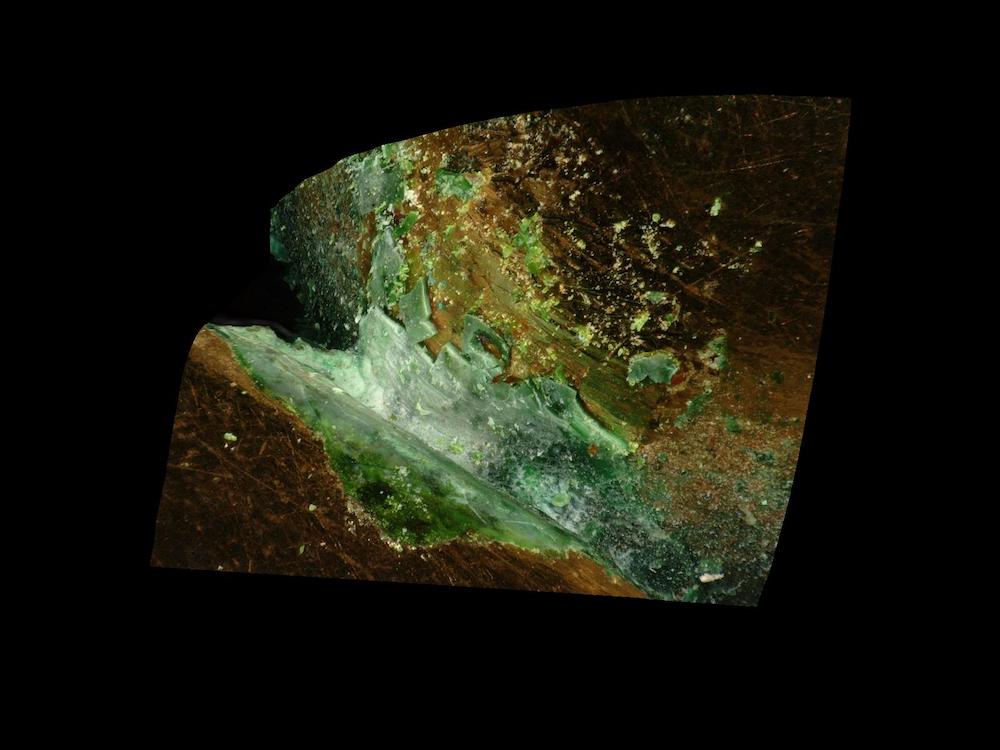Infra-red imaging works by making use of the fact that long-wave infra-red radiation can penetrate different layers of paint to varying degrees and is reflected by a white opaque surface. In most paintings, there is a preparatory layer, called the ground, which consists of a layer of intense white pigment and a binder. If there had been any preparatory sketches done by the artist with charcoal or graphite pencil, the carbon-based material will strongly absorb the infra-red and will render an exact image of the drawing that is hidden from view. In addition, alterations in the painting composition could also be detected given the right conditions in terms of paint structure and thickness.
In the early days, the use of a video system or vidicon tube was the norm in acquiring infra-red images. Specially prepared photographic film sensitive to infra-red radiation was also commonly used as a means of recording. Today, with the advances made in digital imaging hardware and software, infra-red images are very easily captured using specially prepared digital cameras with very specific filters.
As in most technical examination techniques used in the examination of artworks and artefacts prior to conservation treatment, infra-red imaging actually originated outside of the field of heritage conservation. A case in point is the digital infra-red imaging system in use at the Heritage Conservation Centre – MuSIS-MS, from FORTH Photonics[3] – which was first developed for use in the medical field in the detection of pre-cancerous cells. Use of infra-red imaging in other fields would include night-time surveillance in military and security applications, as well as geospatial imaging, in particular to determine the health of large tract of forests by taking infra-red images of the foliage of trees.
In 2006, Sylvia Haliman, a conservation intern working at the Heritage Conservation Centre, undertook a series of technical examination of paintings by Singapore artist Wong Shih Yaw. From the various infra-red reflectograms captured, we were able to draw some conclusions on the working techniques of the artist.
In a series of small and intimate still life paintings –Still Life series – grid patterns were visibly drawn to aid the painting of round-shaped object such as bowls and plates. This was confirmed with the artist and he further explained that the accurate rendering of such geometric shapes was of importance as he was interested in depicting those items as close to “real life” as possible. It was also the artist’s intense deep appreciation of the everyday objects and food that he was attempting to depict that resulted in the artist paying close attention to getting the details in his painting right[4].
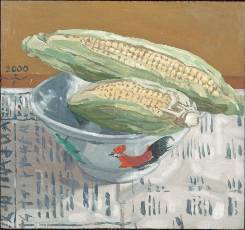 Wong Shih Yaw Still Life No. 10
|
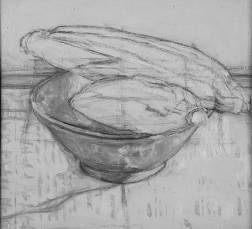 Infra-red reflectogram
|
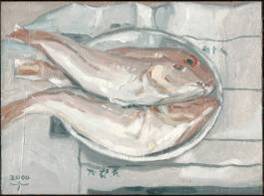 Wong Shih Yaw Still Life No. 4
|
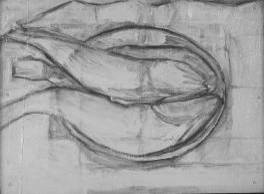 Infra-red reflectogram
|
Another finding from the series of infra-red imaging undertaken was the working process and alternations made to the painting Resurrection of Christ.
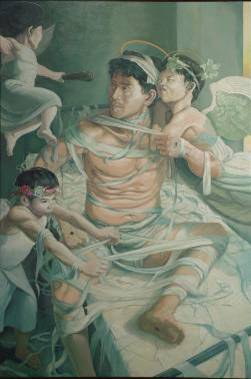 Wong Shih Yaw Resurrection of Christ
|
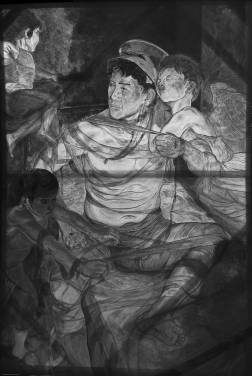 Transmitted Infra-red image
|
A series of transmitted infra-red images, with the infra-red source (a tungsten light bulb) placed at the back of the painting, were taken and stitched together digitally. Due to the positioning of the infra-red source, the structure of the wooden strainer support used by the artist also appeared on the image as dark horizontal and angled straight bars.
Of particular interest were the alterations made to the composition that could be discerned in the infra-red image. In the lower right corner, the position of the bed post has been altered and brought lower in the final composition, so as to allow a fuller view of the foot of the central Christ figure. In addition, there was also a dark patch on the extreme right corner edge that on close examination bore the trace of a head of a figure. The painted out figure was mentioned by the artist[5] and its exact location can now be confirmed by the infra-red image. The artist further explained that the alterations were made as he wanted to create a balance of tension of lines and empty (resting) spaces in his composition. Having the figure at the lower right corner rendered the composition rather crowded, hence his final decision to paint the figure out, at the risk of incurring his nephew’s displeasure[6]!
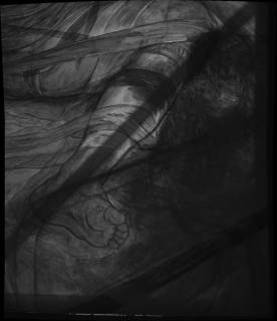 Wong Shih Yaw Resurrection of Christ,
transmitted infra-red image, detail.
|
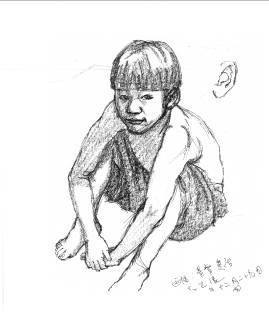 Artist’s sketch (courtesy of the artist)
|
Wong Shih Yaw Resurrection of Christ, transmitted infra-red image, detail.
With the infra-red imaging and technical examination of Wong Shih Yaw’s Resurrection of Christ, we are now able to have a glimpse of an artist’s working style and painting techniques. This will aid in the collaborative effort to build up of a body of knowledge of the artist’s work.
Wong Shih Yaw Resurrection of Christ, transmitted infra-red image, detail.
At the top right quadrant of the painting, the flowers on the head of the angel, that were clearly visible in the final painting, were rendered invisible in the infra-red image. This indicated that the flowers were added much later in the process of painting, after the angel’s head had been completed, as the paint used for the hair had blocked out most of the incoming infra-red. The flowers were probably not finalised in the original composition, in contrast with the bandages on Christ’s head, which the infra-red image showed up as separately painted areas of hair and bandages8. The size of the angel’s right wing was also increased in the final painting, as compared to the infra-red image.
The darkened area was also a strong indication of the application of additional layers of paint, which would absorb more of the transmitted infra-red radiation. This thicker layer of paint resulted in a weaker infra-red signal being detected, hence it was rendered as a darker patch in the final infra-red image.
Evidence of repeated application of paint could be seen in the face of the figure at the left of the composition. The face and arms of the child appeared much darker than the faces of the other three figures in the painting. In an interview with the artist, this was revealed as the first figure to be painted by the artist and he spent a considerable amount of time in trying to achieve the rendering of the exact facial expression as he had intended. Once that was completed, subsequent figures were painted with much greater ease – and less re-working over with paint[7].
By Lawrence Chin, with infra-red images by Sylvia Haliman
Lawrence Chin is formerly Senior Conservator (Paintings), Heritage Conservation Centre. This article was first published in beMUSE, Vol.01, Issue.02, Jan-Mar 2008, National Heritage Board, pp 56 - 57.
References:
[1] See Rawlins, Francis Ian Gregory “Beneath the surface of old pictures” in Journal of the Royal Society of Arts 41 (1943).
2 See van Asperen de Boer, J.R.J. “Infrared reflectography: a method for the examination of paintings” in Applied optics 7, no. 9 1968 Aug).
3 For more information, see the MuSIS web-site at - http://musis.forth-photonics.gr/
4 Interview with artist, 13th July 2007.
5 See artist’s blog post at - http://sealedman.blogspot.com/2006/06/making-of-resurrection-of-christ-part_09.html
6 Interview with artist, 13th July 2007.
7 Ibid.
8 This working process was also confirmed by the artist in an interview (13th July 2007).




